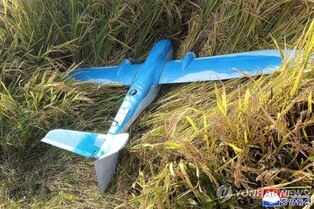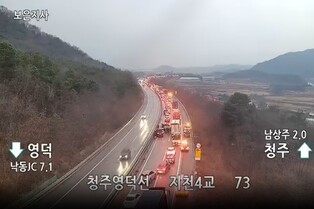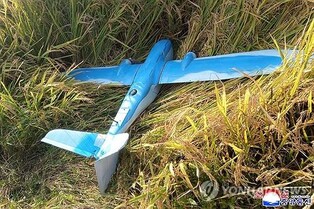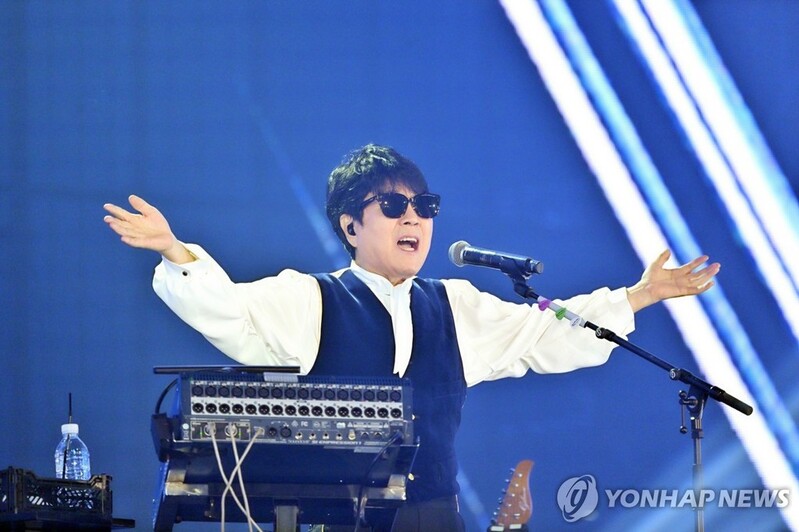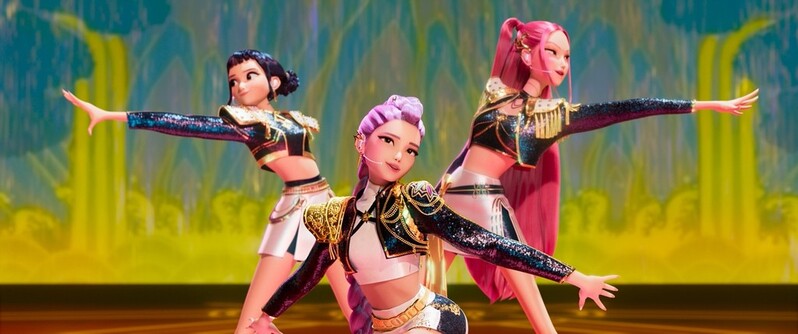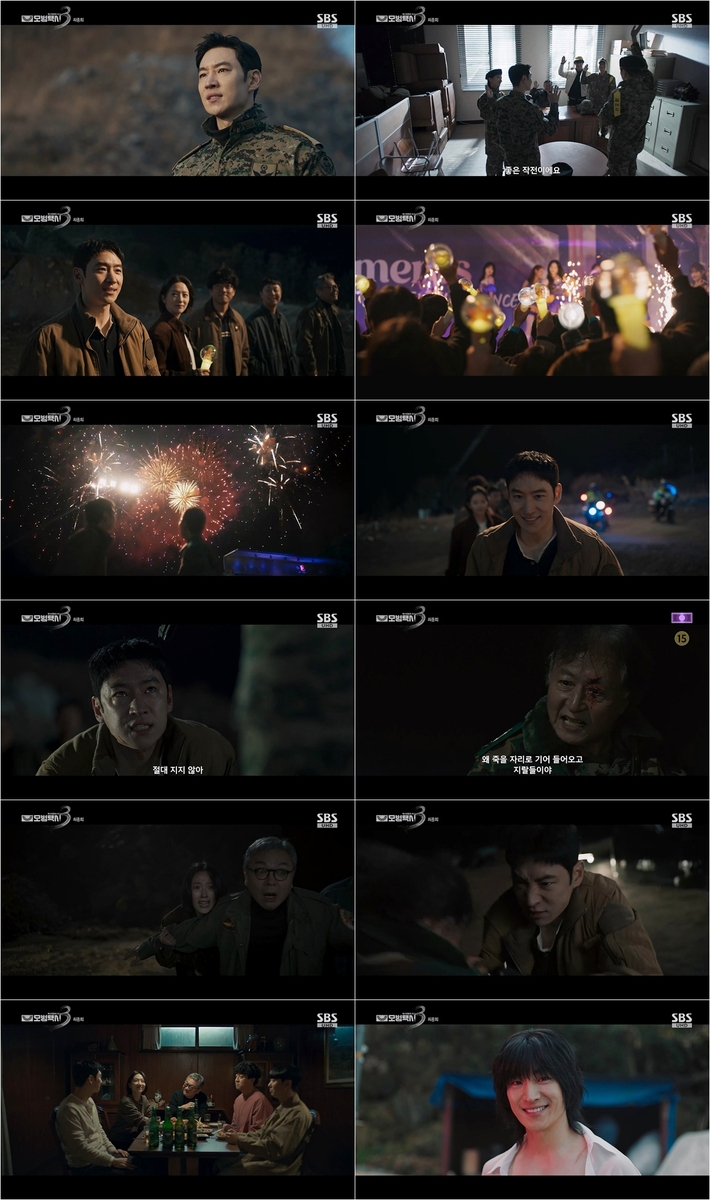*Editor’s note: K-VIBE invites experts from various K-culture sectors to share their extraordinary discovery about the Korean culture.
Larger Than Architecture: Journey Through Namdo
By Kim Won (Master K-architect)
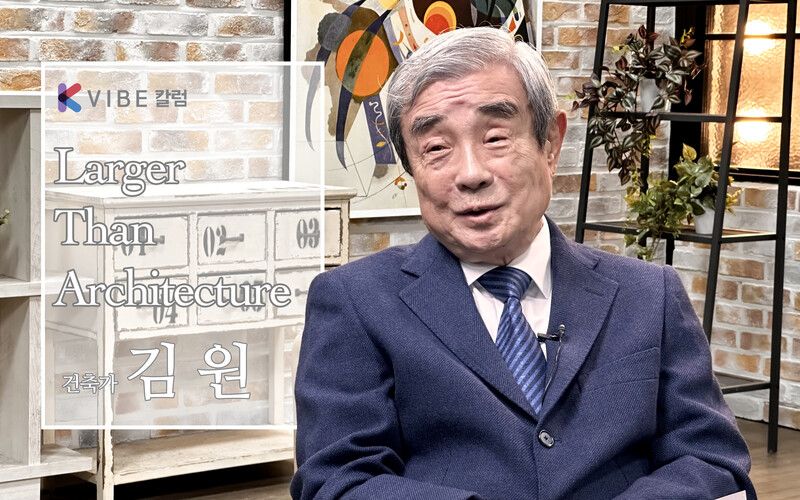
Traveling through Namdo (the southern region of Korea) is always filled with memorable experiences. This time, the journey followed the Seohaean Expressway southward, uncovering the region’s unique charm and history.
◇ Chaseokgang and Jeokbyeokgang
Chaseokgang and Jeokbyeokgang, located in Gyeokpo-ri, Byeonsan-myeon, Buan-gun, Jeollabuk-do, are celebrated natural monuments. Designated as Scenic Site No. 13 in 2004, these coastal cliffs are named after the resemblance of their landscapes to those described in Song Dynasty poet Su Dongpo's Red Cliff Ode.
Chaseokgang is particularly awe-inspiring, with its layered rock formations resembling stacks of books. Though the area once boasted tranquil fishing villages like Gyeokpo and Gomso, today it is filled with motels and seafood restaurants, reflecting its transformation into a bustling tourist destination.
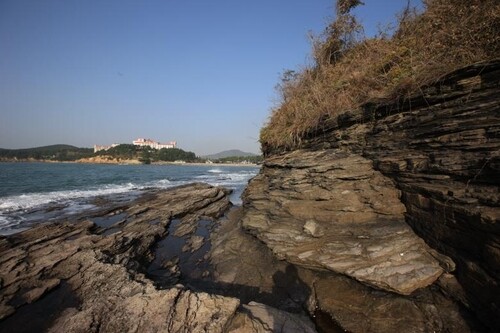 |
| ▲ This image of Jeokbyeok River in Buan is captured from the National Heritage Portal. (PHOTO NOT FOR SALE) (Yonhap) |
◇ Naesosa
Naesosa Temple, initially founded in 633 (34th year of Baekje’s King Mu) by the monk Hyegu, is a cultural treasure. Its Daeungjeon Hall, built by Seon monk Cheongmin in 1663, is lauded for its exquisite craftsmanship and designated as Treasure No. 291.
Throughout its history, the temple underwent significant restorations, most notably by monks Gwanhae, Manheo, and Hyesan during the late Joseon Dynasty. Though originally named Soraesa, the origins of its current name remain unknown. Visitors can marvel at treasures like the Goryeo bronze bell, the Yeongsan Assembly hanging scroll, a three-story stone pagoda, and other local cultural assets.
◇ Hampyeong
The Hampyeong Butterfly Festival left a lasting impression with its vibrant and engaging exhibits. Officially known as the Hampyeong World Butterfly and Insect Expo, this year’s festival welcomed 180,000 visitors—six times the county’s population of 30,000—and generated 1.5 billion KRW in revenue.
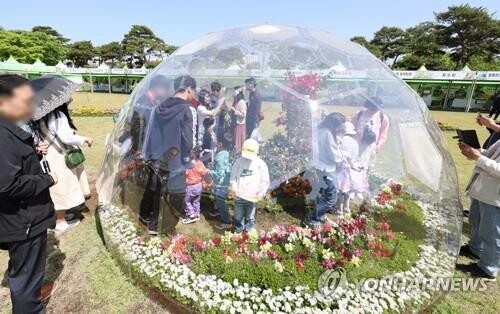 |
| ▲ Visitors enjoy the 2023 Hampyeong Butterfly Festival at Hampyeong Expo Park in Hampyeong, South Jeolla Province. (Yonhap) |
The festival featured 39 species and 330,000 butterflies fluttering in the Butterfly Ecology Hall, enchanting children and adults alike. Inspired by this, I purchased two cabbage white butterfly larvae for my granddaughter, intrigued by the promise that they would transform into butterflies within a week—a clever strategy that underscored the festival’s success.
The International Insect Hall showcased fascinating species, including the world’s largest Hercules beetle, while the immersive themes of nature and environmental conservation resonated deeply with visitors.
Among the most compelling exhibits was the Birdhouse Project, a collaborative initiative inviting renowned architects, designers, and students to create innovative birdhouse designs as a call to preserve the environment. Notable contributors included Renzo Piano, Peter Eisenman, Norman Foster, and Ando Tadao, among others.
Since its inception in 1993, the project has gained global recognition, blending artistic ingenuity with ecological responsibility. Viewing these imaginative designs, one couldn’t help but feel a renewed sense of youthful wonder and a deeper appreciation for creative solutions to pressing environmental issues.
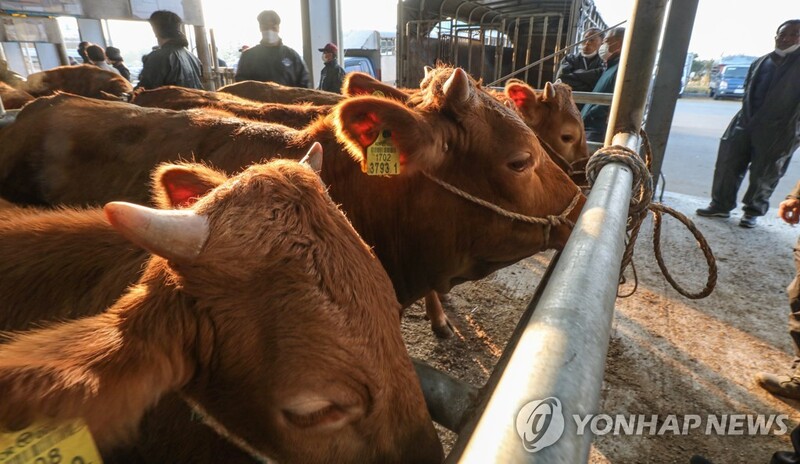 |
| ▲ This file photo taken Nov. 8, 2022, shows a cattle market in Hampyeong, 274 kilometers southwest of Seoul. (Yonhap) |
◇ Gangjin
Gangjin drew attention for its unique "Golden Hanwoo Cow Food Village," launched on May 14, 2008, through a joint investment of 1.5 billion KRW by Gangjin County and six local meat businesses.
Here, visitors can purchase high-quality hanwoo beef directly from the butcher shop on the ground floor and grill it upstairs in designated restaurants. This innovative model, spearheaded by the "Gangjin Hanwoo Business Group," cuts out intermediaries by supplying beef directly from local ranchers. The results are striking—beef prices here are less than 40% of what one would pay in Seoul’s upscale Cheongdam-dong.
◇ Jindo
Contrary to the stereotype of islanders being rough due to harsh climates, Jindo’s inhabitants have historically enjoyed prosperity, thanks to the island’s abundant agricultural and fishing resources. This affluence contributed to a welcoming and refined culture.
Centuries ago, Jindo was a favored location for exiled officials from Seoul. Such was their influx that a Joseon-era provincial governor reportedly petitioned the royal court, stating, “Jindo’s residents are starving because they’re hosting too many exiles. Please move the exile site elsewhere.”
These exiles, however, brought more than just their appetites; they enriched the island’s cultural fabric by sharing their knowledge of literature, art, and calligraphy. Over time, Jindo earned the title "Island of Arts."
Jindo holds a significant place in Korean history as the last stronghold of the Sambyeolcho Army during the Goryeo Dynasty. After King Wonjong allied with the Mongols, the Sambyeolcho, led by Bae Jung-son, opposed the treaty and declared independence. They crowned King Won’s cousin as their ruler and built their base at Yongjang Mountain Fortress near Byeokpajin, resisting the Mongol forces for years.
Despite initial success, including capturing parts of Jeolla Province and Jeju Island, the Sambyeolcho eventually succumbed to the combined forces of Goryeo General Kim Bang-gyeong and Mongol Commander Hong Dagu. Today, Yongjang Mountain Fortress is recognized as a historical site, a testament to this era of defiance.
Similarly, the Namdo Stone Fortress, believed by some to have been constructed by the Sambyeolcho, predates their time. With records dating back to the Three Kingdoms era, it served as a strategic defense point against Japanese pirates and later as a naval base during the Joseon period.
Jindo’s most illustrious native son, Sochi Heo Ryeon (1808–1893), rose from the island’s periphery to become a master of Namjong painting. His artistry owes much to his two influential mentors: Chusa Kim Jeong-hui, a calligraphy genius, and Seon monk Choui, a tea master and cultural luminary.
Heo Ryeon’s artistic journey began at age 28 when he immersed himself in the artistic treasures of Haenam’s Nokwoodang, home to the renowned Yun Duseo family. With Choui’s introduction, Heo met Kim Jeong-hui, who became his guide in blending the essence of Yuan Dynasty Namjong painting with distinctly Korean elements.
Kim Jeong-hui once praised Heo’s talent, declaring, “There is no painter east of the Amnok River who rivals Sochi.” Under Kim’s mentorship, Heo developed his own style that emphasized “eui-gyeong” (spiritual expression), laying the foundation for a uniquely Korean interpretation of Namjong painting.
Heo’s contributions significantly shaped the traditional art scene in Honam (the Jeolla region), influencing generations of artists and cementing Jindo’s reputation as a cultural hub.
◇ Haenam
Haenam offers a magical experience for visitors, with its Dinosaur Museum and surrounding landscapes evoking a vivid sense of the Cretaceous period. At the entrance of a small bay where rivers meet the sea, fields of reeds stretch as far as the eye can see, creating an otherworldly ambiance that feels as if dinosaurs might emerge with roars from the horizon.
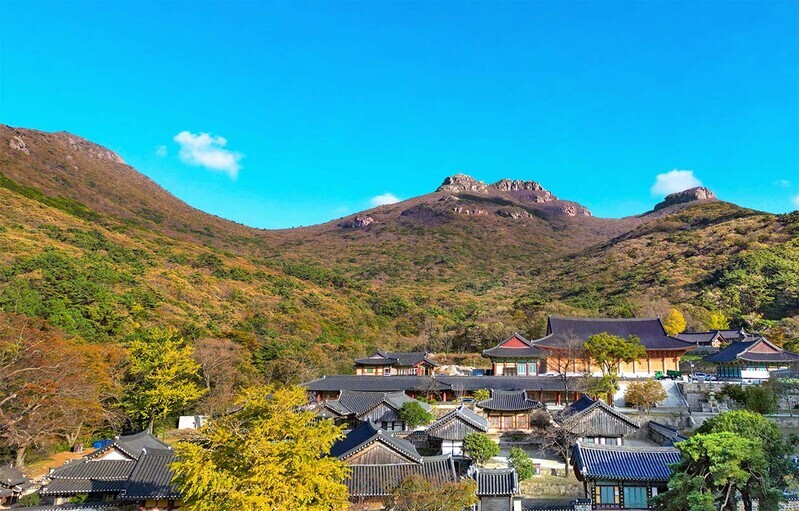 |
| ▲ This photo provided by the Haenam County Office shows a forest path of Mount Dalma, part of the Namparang Trail, in southwestern South Korea. (PHOTO NOT FOR SALE) (Yonhap) |
In October 2008, Dr. Patrick McKeever, a senior geologist from the Geological Survey of Northern Ireland and an advisor to UNESCO’s International Union for Conservation of Nature (IUCN), visited South Korea’s southern coastal areas. He explored dinosaur footprints and fossilized terrains across Haenam, Hwasun, Boseong, Yeosu, and Goseong.
During his investigation, Dr. McKeever described the sites as "a comprehensive showcase of Cretaceous history with high conservation value." He made an exciting discovery of rock imprints resembling the pecking marks of birds, evidence that birds and pterosaurs coexisted 85 million years ago. The fossilized tracks also provided definitive evidence that pterosaurs walked on four legs, resolving a long-standing debate about their locomotion.
Haenam’s fossil sites, including those at Uhang-ri, have been recognized for their scientific and cultural importance. They are currently listed on UNESCO’s Tentative World Heritage Sites, and the name of the site was updated on July 26, 2021, from “Haenam Hwangsan-myeon Uhang-ri Dinosaur, Pterosaur, and Bird Footprint Fossil Site” to “Haenam Uhang-ri Dinosaur, Pterosaur, and Bird Footprint Fossil Site.”
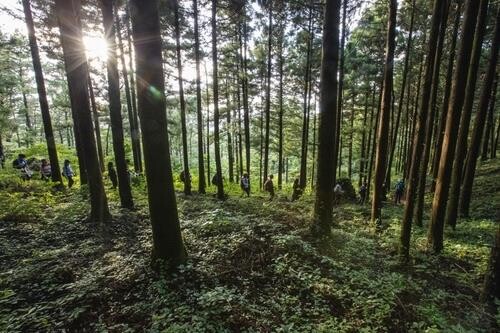 |
| ▲ This photo provided by the Haenam County Office shows a forest path of Mount Dalma, part of the Namparang Trail, in southwestern South Korea. (PHOTO NOT FOR SALE) (Yonhap) |
(C) Yonhap News Agency. All Rights Reserved








